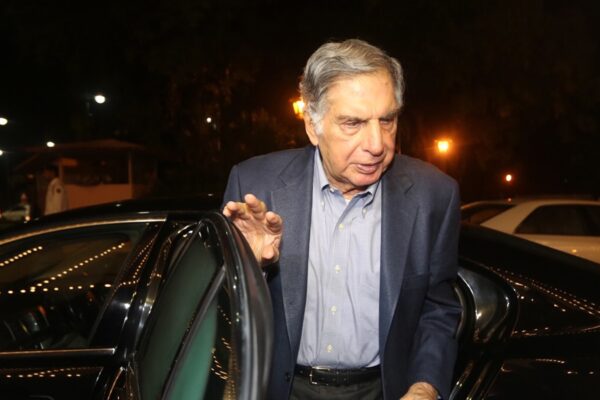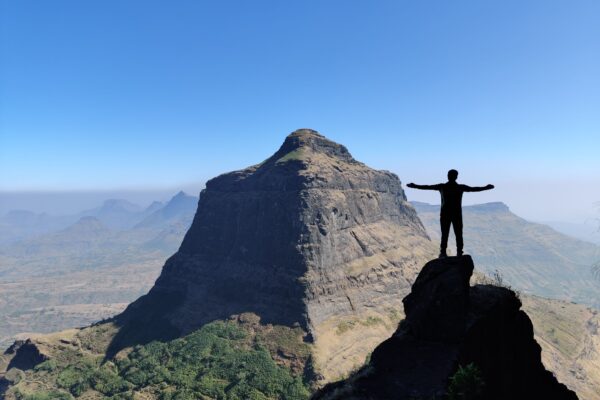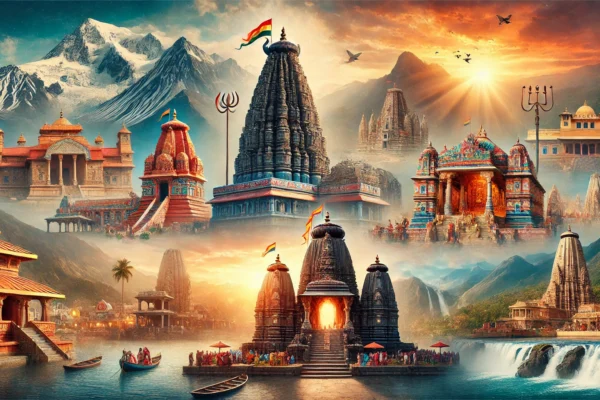
Category: Culture

Ratan Tata: The Visionary Leader, Humble Philanthropist, and Animal Lover Who Left a Lasting Legacy
Ratan Tata, the former chairman of Tata Group, is remembered as one of India’s greatest business leaders. Born on December 28, 1937, Ratan Tata took over the leadership of Tata Group in 1991, transforming it into a global powerhouse. His vision for India, his humility, his love for animals, and his dedication to philanthropy made him an icon not just in the corporate world but also in the hearts of millions of people. In this article, we explore Ratan Tata’s most significant achievements, the values he embodied, his love for animals, and how his vision continues to shape India. The Early Life and Rise to Leadership Ratan Tata was born into the prominent Tata family, known for its industrial legacy. Despite his privileged background, Tata’s childhood was far from ideal. His parents separated when he was young, and he was primarily raised by his grandmother, Lady Navajbai Tata. Ratan Tata pursued his education at Cornell University, studying architecture and structural engineering, and later attended the Harvard Business School. He joined Tata Group in 1961, starting his career on the shop floor of Tata Steel, shoveling limestone and handling the blast furnace. This hands-on experience shaped his understanding of the challenges faced by workers and gave him a unique perspective on leadership. He gradually rose through the ranks and, in 1991, succeeded J.R.D. Tata as chairman of Tata Sons, marking the beginning of a new era for the conglomerate. Transforming Tata Group into a Global Powerhouse Under Ratan Tata’s leadership, Tata Group underwent a significant transformation. He focused on modernization, innovation, and expanding the company’s global footprint. Some of his most notable achievements include: Global Acquisitions Ratan Tata led Tata Group through a series of high-profile acquisitions that put the company on the global map. The acquisition of Tetley Tea in 2000, Corus Steel in 2007, and Jaguar Land Rover in 2008 were monumental moves that showcased Tata Group’s ambition and capability. These acquisitions helped establish Tata as a global brand and diversified the company’s portfolio across various sectors, including automotive, steel, and consumer goods. Launch of Tata Nano One of Ratan Tata’s most ambitious projects was the launch of the Tata Nano in 2008, often referred to as the “people’s car.” Priced at around $2,000, the Nano was the world’s cheapest car, aimed at making car ownership accessible to millions of Indian families. Although the Nano did not achieve commercial success, it remains a testament to Tata’s vision of providing affordable mobility to the masses. However, the journey of Tata Nano was not without challenges. Despite the noble intention behind it, the Nano faced significant hurdles. Many people viewed the car as being too cheap, which led to it being perceived as low-quality. Additionally, issues with production facilities, such as the protests over land acquisition in Singur, West Bengal, forced Tata to shift the manufacturing plant to Gujarat. These setbacks, combined with insufficient consumer interest, ultimately led to the Nano’s failure in the market. Ratan Tata often expressed his disappointment that the Nano did not succeed as intended, as he truly believed in its potential to transform transportation for Indian families. Expanding Tata Consultancy Services (TCS) Ratan Tata also played a pivotal role in expanding Tata Consultancy Services (TCS), which became one of the world’s largest IT services companies under his leadership. Today, TCS is a major player in the global IT industry, contributing significantly to India’s reputation as an IT hub. Taj Hotels and Indian Hospitality Ratan Tata’s leadership was instrumental in expanding the Taj Group of Hotels, making it synonymous with luxury and Indian hospitality. The Taj Mahal Palace Hotel in Mumbai, which faced a tragic terrorist attack in 2008, became a symbol of resilience. Tata’s compassionate response to the attack, where he ensured that every affected employee and their family received support, further solidified his image as a caring leader. A Humble Leader with a Heart of Gold Despite his immense success, Ratan Tata remained humble and approachable. He was known for his simplicity, often seen driving himself to work in a Tata car without the fanfare that usually surrounds business tycoons. His humility extended to his interactions with employees, whom he treated with respect and empathy, regardless of their position in the company. Tata’s humility was evident when he visited the families of employees affected by the 26/11 Mumbai attacks. He personally ensured that all those impacted received support, and he visited hospitals to meet the injured. This compassionate approach earned him admiration not just within Tata Group but across the country. Ratan Tata’s Love for Animals Ratan Tata’s love for animals was well-known. He was an advocate for animal welfare and frequently used his influence to support animal rights. Tata was known to rescue stray dogs and provide them with shelter. The headquarters of Tata Group in Mumbai, Bombay House, has a dedicated space for stray dogs, a reflection of Tata’s affection for animals. During the renovation of Bombay House in 2018, Tata ensured that a kennel was built to house the stray dogs that had made the building their home. This act of kindness highlighted his deep empathy for all living beings. He often shared stories and pictures of animals on his social media, using his platform to raise awareness about animal welfare issues. Philanthropy and Vision for India Ratan Tata’s contributions went far beyond the corporate world. He was deeply committed to philanthropy, and under his leadership, Tata Group continued its legacy of giving back to society. Around 66% of Tata Sons is owned by charitable trusts, and the profits are used to fund various initiatives in education, healthcare, and rural development. Education Initiatives Tata was a strong advocate for education and played a key role in establishing institutions like the Tata Institute of Social Sciences (TISS) and the Tata Medical Center in Kolkata. He also contributed to numerous scholarships for Indian students to study abroad, believing that education was the key to India’s progress. Healthcare Contributions Ratan Tata was instrumental in…

Top 10 Highest Forts of Maharashtra: A Journey Through History and Adventure
Maharashtra is a land of majestic forts, each standing tall as a testament to the rich history and heroic battles fought by the Marathas. From towering peaks to deep valleys, these forts are not only historically significant but also offer some of the most thrilling trekking experiences. In this guide, we’ll explore the Top 10 Highest Forts of Maharashtra, ranked by their elevation, and dive into the history, significance, and adventure they provide. Whether you’re a history enthusiast, an avid trekker, or someone seeking a thrilling escape into nature, these forts are sure to capture your imagination. 1. Salher Fort – The Highest Fort in Maharashtra Salher Fort is the highest fort in Maharashtra, standing proudly at 5,141 feet. This fort was the site of one of the largest battles between the Marathas and Mughals, making it a historically significant destination. For trekkers, Salher offers a challenging climb with steep, rugged terrain, especially towards the end. Once you reach the top, you’ll be rewarded with stunning panoramic views of the surrounding Sahyadri range, as well as a breathtaking view of the nearby Salota Fort. Why Visit? 2. Salota Fort – The Neighbor to Salher Located close to Salher, Salota Fort stands at 4,900 feet and offers a similarly challenging trek. The fort is less explored compared to Salher, giving trekkers a sense of isolation and tranquility as they explore the ruins and the beautiful landscape around. Why Visit? 3. Harishchandragad Fort – The Thrill of Konkan Kada Harishchandragad Fort is one of the most beautiful and thrilling forts in Maharashtra. Its most famous feature is the Konkan Kada, a cliff that offers stunning views of the surrounding valley. The trek to Harishchandragad is challenging, with steep climbs and rugged terrain that make it ideal for experienced trekkers. The fort also has historical significance, with ancient temples and caves that add to the charm of this destination. Why Visit? 4. Torna Fort – The First Conquest of Shivaji Maharaj Torna Fort, also known as Prachandagad, is one of the most significant forts in Maharashtra. It was the first fort captured by Chhatrapati Shivaji Maharaj at the age of 16, marking the beginning of the Maratha Empire. The fort offers sweeping views of the Sahyadri range, especially during the monsoon season when the surrounding area is lush with greenery. The trek to Torna is moderate to difficult, making it an exciting challenge for adventure enthusiasts. Why Visit? 5. Rajgad Fort – The Former Capital of the Maratha Empire Rajgad Fort was once the capital of the Maratha Empire under Chhatrapati Shivaji Maharaj and is known for its sprawling size and historical significance. The trek to Rajgad is challenging but incredibly rewarding, offering stunning views of the surrounding mountains. The fort itself is vast, with various points of interest such as Padmavati Temple, Suvela Machi, and Balekilla, which provide a glimpse into the grandeur of the Maratha Empire. Why Visit? 6. Ratangad Fort – The Jewel of the Sahyadris Ratangad Fort is known for its scenic beauty and its strategic location in the Sahyadris. The fort offers a thrilling trek through rocky terrain and lush forests. The fort’s natural rock formations, especially the Nedhe or “needle hole,” are a highlight for many visitors. Why Visit? 7. Panhala Fort – The Largest Fort in Maharashtra Panhala Fort is one of the largest forts in Maharashtra, known for its rich history and stunning architecture. The fort was an important strategic location during Shivaji Maharaj’s reign and offers a relatively easy trek compared to some of the other forts on this list. Why Visit? 8. Lohagad Fort – The Iron Fort Lohagad Fort is known for its unique Vinchu Kata (Scorpion’s Tail), a long and narrow ridge that extends from the fort and offers stunning views of the surrounding region. The fort is one of the easiest to trek and is perfect for beginners. Why Visit? 9. Pratapgad Fort – The Victory Fort Pratapgad Fort is famous for the historic battle between Shivaji Maharaj and Afzal Khan. The fort offers stunning views of the nearby hills and valleys, making it a popular destination for trekkers and history enthusiasts. Why Visit? 10. Shivneri Fort – The Birthplace of Shivaji Maharaj Shivneri Fort is the birthplace of Chhatrapati Shivaji Maharaj, making it a significant historical site. The trek to Shivneri is relatively easy, making it accessible for beginners, and the fort offers panoramic views of the surrounding area. Why Visit? Conclusion Maharashtra’s forts offer a unique blend of history, adventure, and natural beauty. From the highest fort at Salher to the historically significant

The Ultimate Guide to Eco-Friendly Living and Sustainable Practices in India
In recent years, India has seen an incredible shift toward sustainable living. As climate change becomes an urgent global issue, many Indian cities, communities, and households are adopting eco-friendly practices that not only protect the environment but also enhance well-being. This guide will take you through various sustainable practices in India, from energy efficiency to waste management, and how you can incorporate them into your daily life. 1. Solar Energy: Harnessing the Power of the Sun India, with its abundance of sunlight, is an ideal place for solar energy adoption. Across cities and rural areas, solar panels are becoming a common sight on rooftops. Whether for home use or large-scale commercial applications, solar energy offers a clean and renewable alternative to traditional power sources. Why Go Solar? How to Start? To start using solar energy, research local providers and understand the financial benefits. Many cities offer incentives, and the return on investment usually happens within a few years, after which you’re saving energy costs indefinitely. 2. Rainwater Harvesting: Conserving Water the Smart Way India’s water scarcity issue can be mitigated by adopting rainwater harvesting systems. Rainwater harvesting involves collecting and storing rainwater for future use, reducing dependency on groundwater. It’s a simple and highly effective way to conserve this precious resource. Benefits of Rainwater Harvesting How to Set It Up? Start by checking your roof and surroundings. Install gutters and pipes to direct the rainwater into a storage tank or cistern. For filtration and purification, you can add a filter system to make the water usable for daily chores or even drinking. 3. Organic Farming and Urban Gardens Whether you live in a bustling city or a quiet village, organic farming and urban gardening are highly beneficial ways to contribute to sustainable living. In cities like Mumbai and Bangalore, rooftop gardens are becoming increasingly popular. People grow their own vegetables, herbs, and fruits in small spaces, promoting healthy eating and reducing dependency on mass-produced food. Why Grow Your Own Food? How to Start? You don’t need a huge backyard to start gardening. Even apartment dwellers can create small balcony or rooftop gardens. Invest in organic seeds, natural compost, and local plants that thrive in your climate. 4. Waste Management: The Key to a Cleaner India Waste management is one of India’s biggest environmental challenges, but the solution starts at home. Separating waste into recyclable and non-recyclable categories, composting organic waste, and reducing plastic usage are crucial steps toward a sustainable lifestyle. Tips for Effective Waste Management 5. Sustainable Transportation: Going Green on the Move India’s cities are bustling, but that doesn’t mean you can’t go green while traveling. Electric vehicles (EVs), bicycles, and public transport are becoming increasingly popular, helping reduce pollution and conserve energy. Why Choose Eco-Friendly Transport? How to Make the Switch? If you’re in the market for a new vehicle, consider going electric. For shorter trips, choose to walk, cycle, or take public transportation. Many cities are enhancing their bike lanes and public transport systems to make eco-friendly travel more convenient. Conclusion Eco-friendly living and sustainable practices are not only good for the environment but also for your wallet and health. By adopting solar energy, rainwater harvesting, organic farming, and proper waste management, you can make a significant difference in India’s journey toward a greener future. Whether you live in a rural or urban area, these steps are easy to implement and will have a lasting positive impact on our planet.

Discover the 12 Sacred Jyotirlingas of India: A Spiritual Journey
Somnath Jyotirlinga Prabhas Patan, Gujarat Somnath Temple, Somnath Mandir Rd, Veraval, Gujarat 362268 The Somnath Temple is the first of the twelve Jyotirlingas and is located on the western coast of Gujarat. Known as the “Shrine Eternal,” it has been destroyed and rebuilt several times, symbolizing resilience. Somnath is revered for being the place where Lord Krishna ended his earthly avatar. Mallikarjuna Jyotirlinga Srisailam, Andhra Pradesh Mallikarjuna Temple, Srisailam, Andhra Pradesh 518101 Nestled in the Nallamala Hills, the Mallikarjuna Temple is a tranquil place where Lord Shiva and Goddess Parvati are believed to have manifested. It is a site of great spiritual significance and offers breathtaking views of the surrounding forest. Mahakaleshwar Jyotirlinga Ujjain, Madhya Pradesh Mahakaleshwar Temple, Jaisinghpura, Ujjain, Madhya Pradesh 456006 Mahakaleshwar is one of the most revered Jyotirlingas and is located in Ujjain, known for its powerful energy. The temple is famous for its Bhasma Aarti, performed daily before sunrise, where the Lord is worshipped with sacred ash. Omkareshwar Jyotirlinga Omkareshwar, Khandwa District, Madhya Pradesh Omkareshwar Temple, Omkareshwar, Madhya Pradesh 450554 Situated on the sacred island in the shape of ‘Om,’ Omkareshwar Temple holds immense religious significance. The island is located on the confluence of the Narmada and Kaveri rivers, adding to its spiritual charm. Kedarnath Jyotirlinga Kedarnath, Uttarakhand Kedarnath Temple, Kedarnath, Uttarakhand 246445 Kedarnath Temple is nestled high in the Himalayas and is accessible only during certain months due to heavy snowfall. It is one of the most revered pilgrimages and is considered the home of Lord Shiva in his Kedarnath form. Bhimashankar Jyotirlinga Pune, Maharashtra Bhimashankar Temple, Bhorgiri, Pune, Maharashtra 410509 Set amidst the Sahyadri Hills, Bhimashankar is a beautiful pilgrimage spot known for its natural beauty and the ancient temple architecture. It is surrounded by dense forests, making it a perfect place for spiritual solitude. Kashi Vishwanath Jyotirlinga Varanasi, Uttar Pradesh Kashi Vishwanath Temple, Varanasi, Uttar Pradesh 221001 Kashi Vishwanath Temple, located in the sacred city of Varanasi, is one of the most revered pilgrimage destinations in India. Lord Shiva is believed to grant moksha (salvation) to his devotees here. Trimbakeshwar Jyotirlinga Nashik, Maharashtra Trimbakeshwar Temple, Trimbak, Nashik, Maharashtra 422212 Trimbakeshwar is located near the origin of the holy river Godavari. This Jyotirlinga is unique as it represents the trinity of Lord Brahma, Lord Vishnu, and Lord Shiva. The temple is also an important center for various Vedic rituals like Narayan Nagbali and Tripindi Shraddha. Vaidyanath Jyotirlinga Deoghar, Jharkhand Baba Baidyanath Dham, Deoghar, Jharkhand 814112 Also known as Baba Baidyanath, this temple is considered one of the most sacred abodes of Lord Shiva. It is believed that Ravana worshipped Lord Shiva here and offered his ten heads, thus the deity is also referred to as ‘Vaidyanath,’ the Lord of healing. Nageshwar Jyotirlinga Dwarka, Gujarat Nageshwar Jyotirlinga Temple, Dwarka, Gujarat 361345 Situated near Dwarka, Nageshwar is one of the twelve Jyotirlingas and is considered a symbol of protection from all poisons. It is believed that Lord Shiva in this form protects his devotees from negativity and evil. Rameshwaram Jyotirlinga Rameshwaram, Tamil Nadu Ramanathaswamy Temple, Rameshwaram, Tamil Nadu 623526 Rameshwaram Jyotirlinga is one of the most sacred Hindu pilgrimage destinations. It is believed that Lord Rama worshipped Lord Shiva here to absolve his sins after the war against Ravana. The temple’s intricate architecture and long corridors make it one of the finest in India. Grishneshwar Jyotirlinga Aurangabad, Maharashtra Grishneshwar Temple, Ellora, Aurangabad, Maharashtra 431102 Grishneshwar Temple is located near the famous Ellora Caves and is the twelfth Jyotirlinga. This temple is revered for its simplicity and its importance in Hindu mythology. It is said to be the last Jyotirlinga on earth.

